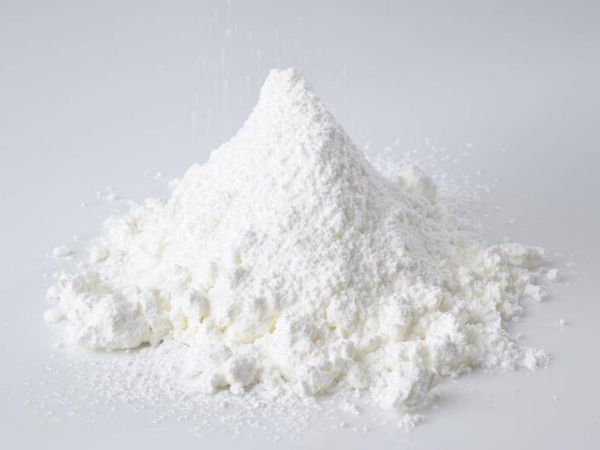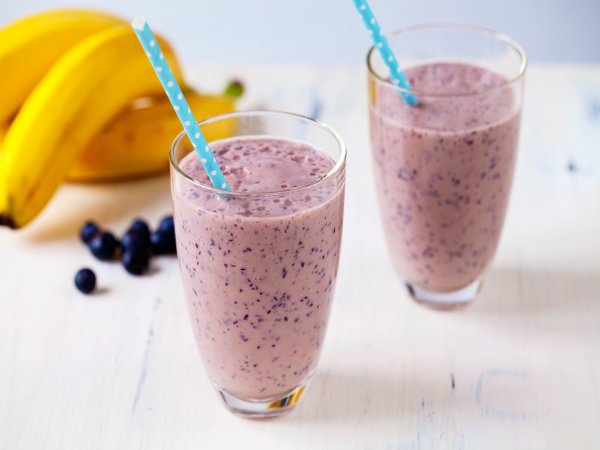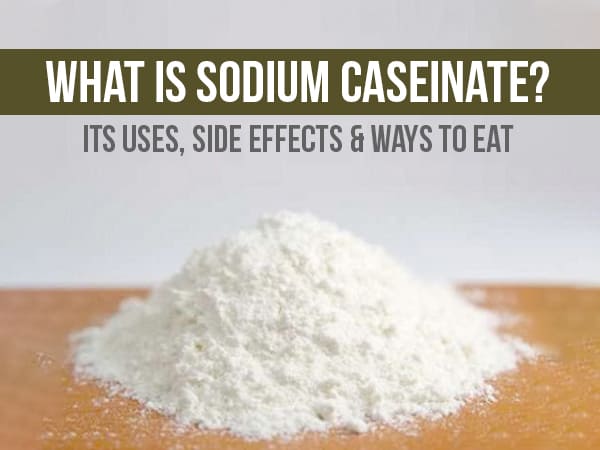Nutrition
oi-Neha Ghosh
on July 16, 2020
Sodium caseinate is obtained from casein, a protein found in mammal’s milk [1]. It is rich in protein and is usually used as a protein supplement and food additive. In this article, we will talk about what sodium caseinate is, its uses and how it’s made.
What Is Sodium Caseinate And How Its Made? [2] [3] [4]
Milk is curdled by adding specialised enzymes or an acidic substance such as lemon juice or vinegar to it. After which, the solid curds are separated from the whey, which is the liquid part of the milk. Once the curd has been separated, they are treated with an alkali called sodium hydroxide, and are then dried and formed into a powder. This product is called sodium caseinate, which is extracted from casein and contains 90 per cent protein. Casein and sodium caseinate are almost the same products and can be used in the same manner, but they vary on a chemical level.
 Cow Milk Vs Buffalo Milk: Which Is Healthier?
Cow Milk Vs Buffalo Milk: Which Is Healthier?

Uses Of Sodium Caseinate
• Protein supplement – This sodium caseinate powder can be used as a protein powder because it provides a rich source of high quality protein. It contains 90 per cent protein. This essential nutrient is required for the body for building and repairing muscle tissues, improving bone health and boosting metabolism. As sodium caseinate is high in protein, it would make an excellent protein supplement choice among athletes and people involved in strength training [5].
• Food additive – In the food industry, sodium caseinate is used as a food additive. It can be used to change the texture and stabilise many kinds of food products such as ice cream, cheese, coffee creamer, cereal bars, chocolate, bread, margarine, cheese-flavoured snacks and processed meats [6].

Who Should Avoid Consuming Sodium Caseinate?
Although sodium caseinate is safe for consumption, certain people should avoid it.
• Casein allergy – If you are allergic to casein, it is advisable to avoid consuming sodium caseinate as it could trigger an allergic reaction. Casein allergy is rare; however, it can cause severe allergic reactions [7].
• It is not vegan – If you are following a vegan or dairy-free diet, you should avoid consuming sodium caseinate and food products that contain sodium caseinate.
 Milk Allergy: Symptoms, Causes, Risk Factors, Diagnosis And Treatment
Milk Allergy: Symptoms, Causes, Risk Factors, Diagnosis And Treatment

Ways To Add Sodium Caseinate In Your Diet
• Mix sodium caseinate in your beverages and foods.
• Add sodium caseinate powder to your smoothies.
READ RELATED: McDonald’s Releases First New McFlurry Flavor of the Year
• You can add sodium caseinate in your oatmeal and eat it for breakfast.
• You can add it in your yogurt as well and have it as a snack.

To Conclude…
Before you add sodium caseinate into your diet, talk to your doctor or nutritionist, because it is important to know how much protein you should consume per day as excess protein consumption is bad for your health [8]. In addition, sodium caseinate can cause an allergy reaction in some people, so its recommended to talk to your doctor.
Common FAQs
Q. Is sodium caseinate dairy?
A. Yes, sodium caseinate is derived from casein, a protein found in mammal’s milk.
Q. Why is casein bad for you?
A. Some people are allergic to casein, so consumption of it can cause an allergic reaction.
Q. Why is sodium caseinate used in food?
A. Sodium caseinate is used in food products as an emulsifier and thickening agent in bread, ice cream margarine and processed meats.
GET THE BEST BOLDSKY STORIES!
Allow Notifications
You have already subscribed
Source: boldsky blog




 Amazing Health Benefits Of Vegan Milk (Plant-based Milk)
Amazing Health Benefits Of Vegan Milk (Plant-based Milk)















